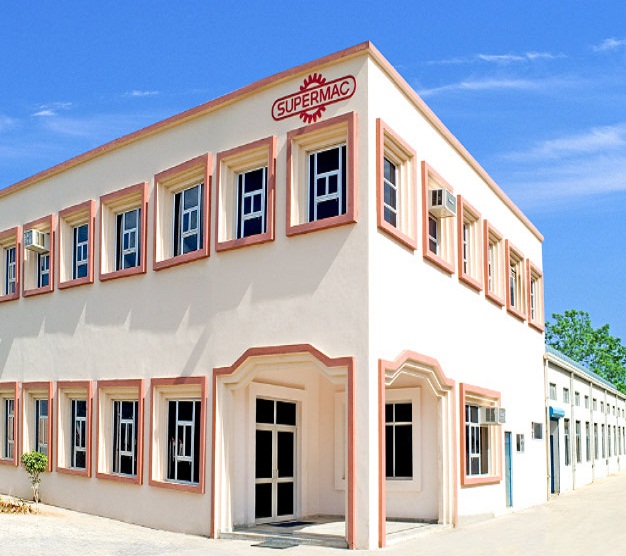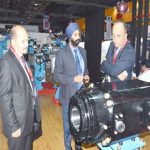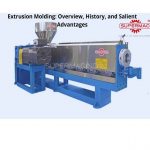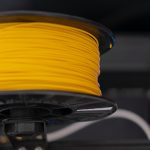Extrusion is a manufacturing process used the world over to create a large number of fixed cross-sectional profiles for varied applications. This process is carried out on a sophisticated plastic or thermoplastic extrusion line supported by capstans, screws and barrels by pushing the raw material into a specific die of the desired cross-section. The extrusion process scores better overall other manufacturing processes mainly for the following two significant advantages:
- The ability to create cross-sections of even the most complex nature, and
- Incredible working efficiencies to work with different raw materials that are brittle.
Outstanding surface finishes and substantial freedom of form
Supported by capstans, screws and barrels, extrusion methodology is also effective in creating outstanding surface finishes and also offers substantial freedom of form during the execution of the design process. Drawing is also a popular process in which the tensile strength of the raw materials is used for pulling through the die. But, this process has limitations as it does not allow for any change concerning the amount which can be carried out in a single shot.
Therefore, the use of drawing is limited only to creating some simple and sober shapes wherein multiple stages are required. Some of the major applications of the drawing process include wire making, metal bars, and tube making.
Extrusion may be of two types
- Continuous (theoretically producing indefinitely long material)
- Semi-continuous (producing many pieces).
Both these processes can be carried out with hot and cold materials. Some of the most commonly extruded materials using the above-mentioned processes include:
- Metals
- Polymers
- Ceramics
- Concrete
- Modeling clay, and
- Foodstuffs.
The process at a glance
The process of extrusion commences with the heating of the stock material on an advanced extrusion facility supported by capstans, screw and barrels. It is then stacked into the compartment in the press. A spurious square is put behind it where the ram pushes on the material to push it out of the die. A short while later the extrusion is extended to straighten it out. In case some better properties are required, then it can be heat treated or even cold worked accordingly.
The extrusion proportion is characterized as the beginning cross-sectional region separated by the cross-sectional space of the last extrusion. One of the primary benefits of the extrusion process is that this proportion can be extremely huge while as yet creating high-quality parts.
Hot extrusion
The extrusion process carried on an advanced facility supported by capstans, screws and barrels involves a hot working methodology. This process is performed above the recrystallization temperature of the material aiming at pushing the material into the die. Horizontal hydraulic presses are most commonly used to carry out the hot extrusion process. These presses range from 230 to 11,000 metric tons with pressures ranging from 30 to 700 MPa (4,400 to 101,500 psi). Due to this reason, sufficient lubrication is always required in the hot extrusion process.
The temperature ranges for hot extrusions process involving varied metals include the following:
- Titanium – Temperature (°C (°F)) 700–1200 (1300–2100)
- Nickel – Temperature (°C (°F)) 1000–1200 (1900–2200)
- Refractory alloys – Temperature (°C (°F) up to 2000 (4000)
- Magnesium – Temperature (°C (°F) 350–450 (650–850)
- Aluminum- Temperature (°C (°F) 350–500 (650–900)
- Copper – Temperature (°C (°F)) 600–1100 (1200–2000)
- Steel – Temperature (°C (°F) 1200–1300 (2200–2400).
Cold extrusion
Cold extrusion is a process performed on a sophisticated facility supported by capstans, screws and barrels either takes place at near room temperature or room temperature. The cold extrusion process scores heavily over the hot one for the following reasons:
- Better strength due to cold working
- Lack of oxidation
- Excellent surface finish
- Extremely fast extrusion speeds
- Closer tolerances.
Some of the most common cold extruded materials are:
- Lead and tin
- Aluminum and copper
- Zirconium and titanium
- Molybdenum and beryllium
- Vanadium and niobium, and
- Steel.
Some of the major products produced using cold extrusion process in a facility supported by capstans, screws and barrels include:
- Collapsible tubes
- Fire extinguisher cases
- Shock absorber cylinders, and
- Gear blanks, etc.
Warm extrusion
It was the year 1956 when a US patent was filed for the warm extrusion process. As per the descriptions in the patent, warm extrusion can be extremely beneficial for the extrusion of both ferrous as well as non-ferrous materials, and alloys in a billet being extruded with some changes in their physical and structural properties while responding to the physical forces. The warm extrusion process is carried out below the recrystallization temperature of the material but above room temperature.
The warm extrusion process is often utilized to obtain a perfect balance of the needed forces, ductility as well as final extrusion properties. During the operations in a sophisticated facility supported by capstans, screws and barrels, the temperature in the warm extrusion process remains between 800 to 1800 °F (424 to 975 °C).
Some of the most commonly extruded metals in a sophisticated facility supported by capstans, screws and barrels include the following:
- Aluminium – extruded for profiles such as mullions, heat sinks, tracks, frames, and rails
- Brass – extruded for corrosion-free rods, auto components, pipe fittings, and a wide range of engineering parts
- Copper – extruded for pipe, tubes, welding electrodes, and wire, rods, bars
- Lead and tin – extruded for pipes, wire, tubes, and cable sheathing
- Magnesium – extruded for aircraft parts as well as nuclear industry parts
- Zinc – extruded for hardware components, fitting, rods, bars, tubes, and handrails
- Steel – extruded for rods and tracks
- Titanium – extruded for aircraft components, engine rings, and a large number of other structural parts.
Concluding Remarks
Supermac Industries (India) Limited is a premium supplier of manufacturing systems and process technologies to various extrusion industries worldwide. Today, the company is catering to numerous industries in the cables sector such as power, optical fiber, house wiring control cables, and medical lines. The company’s rich product portfolio includes a complete range of extrusion machines, crossheads, caterpillars, capstans, screws and barrels, take-ups, and pay-offs. Supermac prides itself on its adherence to the strictest quality control measures and has been awarded the ISO 9001-2018 certification for its entire range of products.





